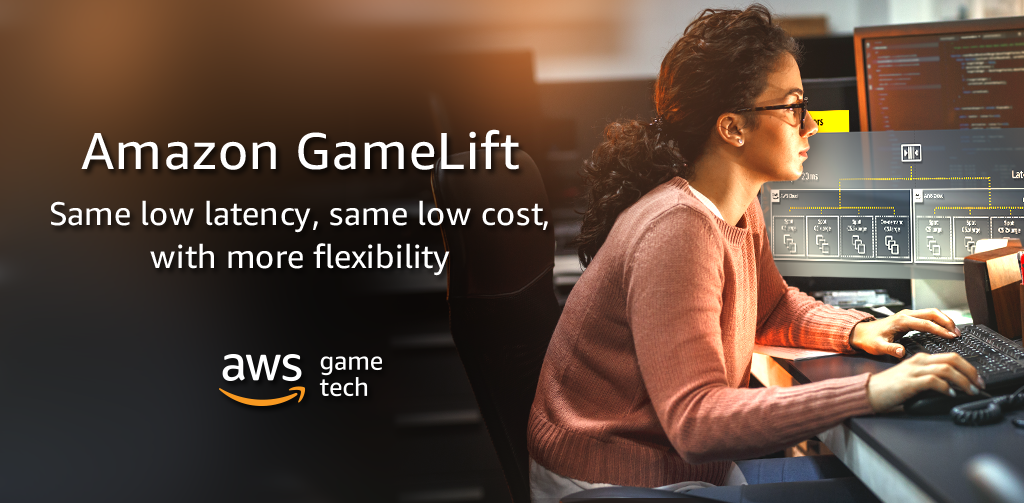A Beginner's Guide to Using AWS GameLift: Easy Steps and Examples
 Sumit Mondal
Sumit Mondal
Introduction:
In the rapidly evolving world of online gaming, delivering a seamless and scalable multiplayer experience is crucial. Amazon Web Services (AWS) offers a powerful solution known as AWS GameLift, designed to simplify the process of hosting, scaling, and managing multiplayer game servers. Whether you're a game developer or an enthusiast looking to explore the world of AWS GameLift, this guide will walk you through the basics in an easy and simple way.
Step 1: Setting Up AWS Account:
Before diving into AWS GameLift, you'll need an AWS account. If you don't have one, head over to the AWS official website (https://aws.amazon.com/) and sign up. Once your account is set up, log in to the AWS Management Console.
Step 2: Accessing AWS GameLift Console:
Navigate to the AWS GameLift console by either searching for "GameLift" in the AWS Management Console or directly visiting https://console.aws.amazon.com/gamelift/. This is your hub for managing game servers.
Step 3: Create a Fleet:
In AWS GameLift, a fleet represents a group of servers that host game sessions. To create a fleet, follow these steps:
Click on "Create Fleet."
Choose your build and runtime configuration.
Set the desired capacity (number of servers).
Configure the network settings.
Once done, click "Create Fleet." AWS GameLift will provision servers based on your specifications.
Step 4: Create a Game Session:
Now that your fleet is ready, it's time to create a game session. A game session represents a game being played on one or more servers. Follow these steps:
In the AWS GameLift console, navigate to "Game Sessions" and click "Create Game Session."
Select the fleet you created.
Set the maximum number of players and other session settings.
Click "Create Game Session."
Step 5: Integrate GameLift SDK:
To connect your game client with the AWS GameLift service, you need to integrate the GameLift SDK into your game. This step may vary depending on your game engine and platform, but generally involves adding the SDK to your project and initializing it with your AWS credentials.
Example for Unity (C#):
using Amazon;
using Amazon.GameLift;
using Amazon.GameLift.Model;
...
AmazonGameLiftClient gameLiftClient = new AmazonGameLiftClient("YOUR_ACCESS_KEY", "YOUR_SECRET_KEY", RegionEndpoint.USWest2);
// Initialize GameLift SDK
GameLift.Initialize(gameLiftClient);
Remember to replace "YOUR_ACCESS_KEY" and "YOUR_SECRET_KEY" with your AWS access key and secret key.
Step 6: Start Game Session on Client:
Once the SDK is integrated, you can use it to start a game session on the client side. Here's a simplified example:
GameLift.StartGameSession(new StartGameSessionRequest
{
FleetId = "YOUR_FLEET_ID",
AliasId = "YOUR_ALIAS_ID",
MaximumPlayerSessionCount = 4
});
Replace "YOUR_FLEET_ID" and "YOUR_ALIAS_ID" with the corresponding values from your AWS GameLift console.
Conclusion:
Congratulations! You've successfully set up and utilized AWS GameLift for hosting and managing your multiplayer game. This beginner's guide aimed to simplify the process, providing you with a foundation to explore the capabilities of AWS GameLift. As you delve deeper into the world of online gaming, AWS GameLift will undoubtedly become an invaluable tool in your toolkit. Happy gaming!
Subscribe to my newsletter
Read articles from Sumit Mondal directly inside your inbox. Subscribe to the newsletter, and don't miss out.
Written by

Sumit Mondal
Sumit Mondal
Hello Hashnode Community! I'm Sumit Mondal, your friendly neighborhood DevOps Engineer on a mission to elevate the world of software development and operations! Join me on Hashnode, and let's code, deploy, and innovate our way to success! Together, we'll shape the future of DevOps one commit at a time. #DevOps #Automation #ContinuousDelivery #HashnodeHero